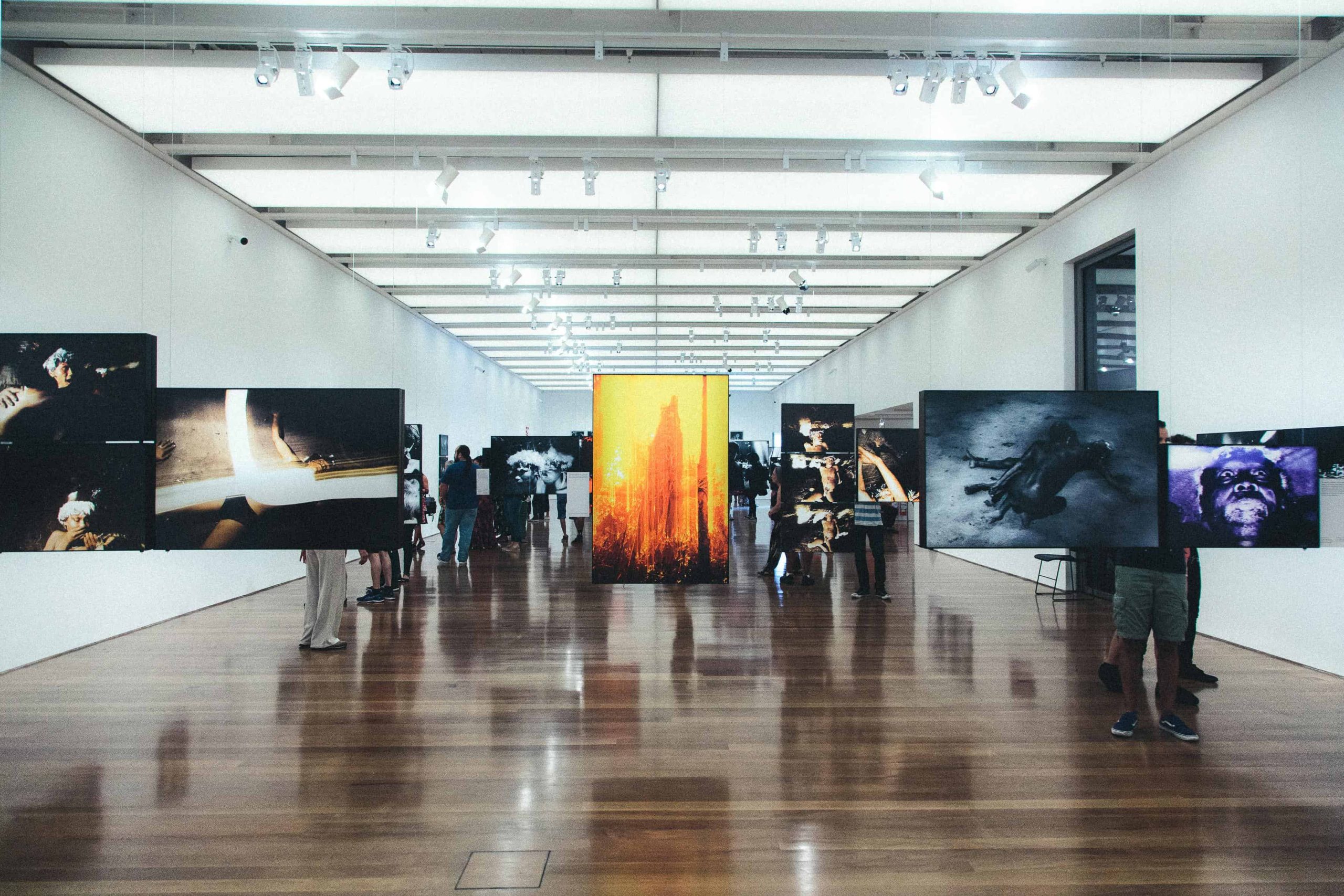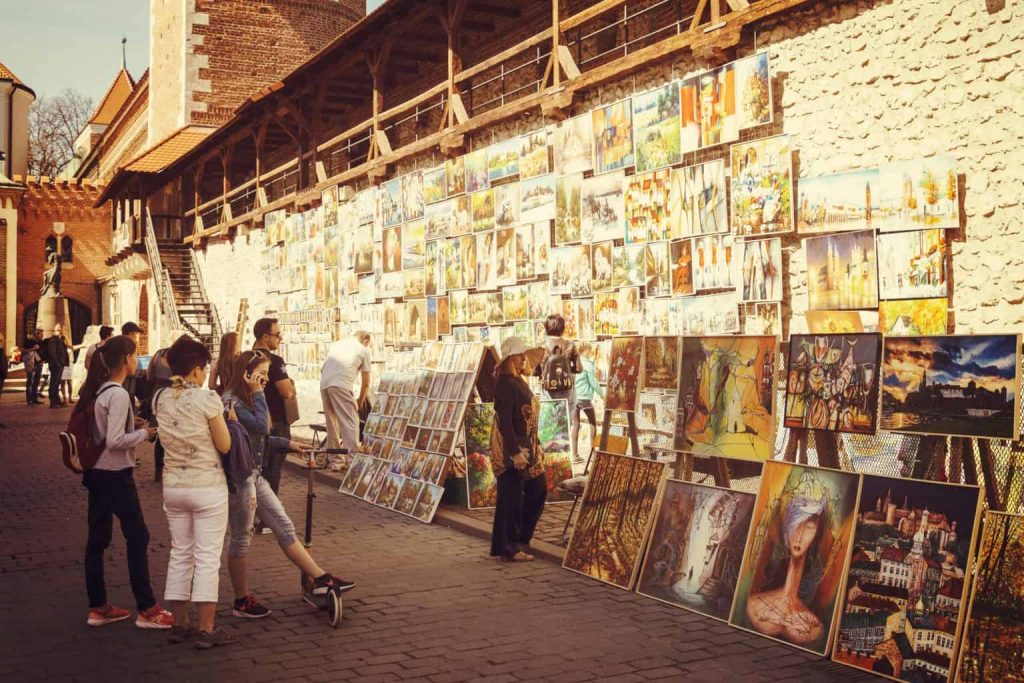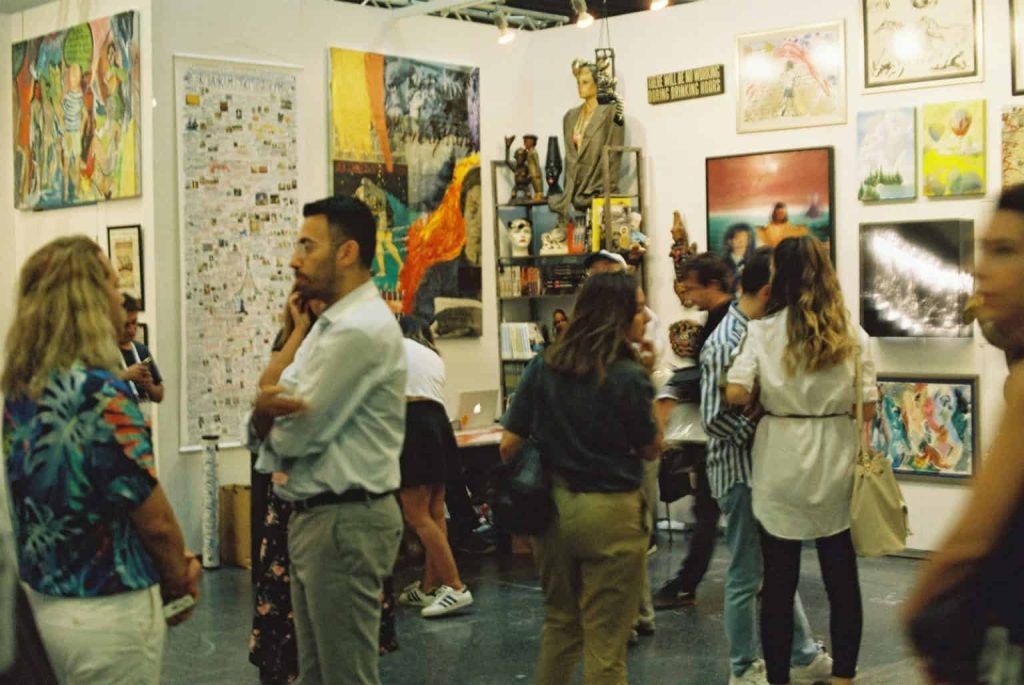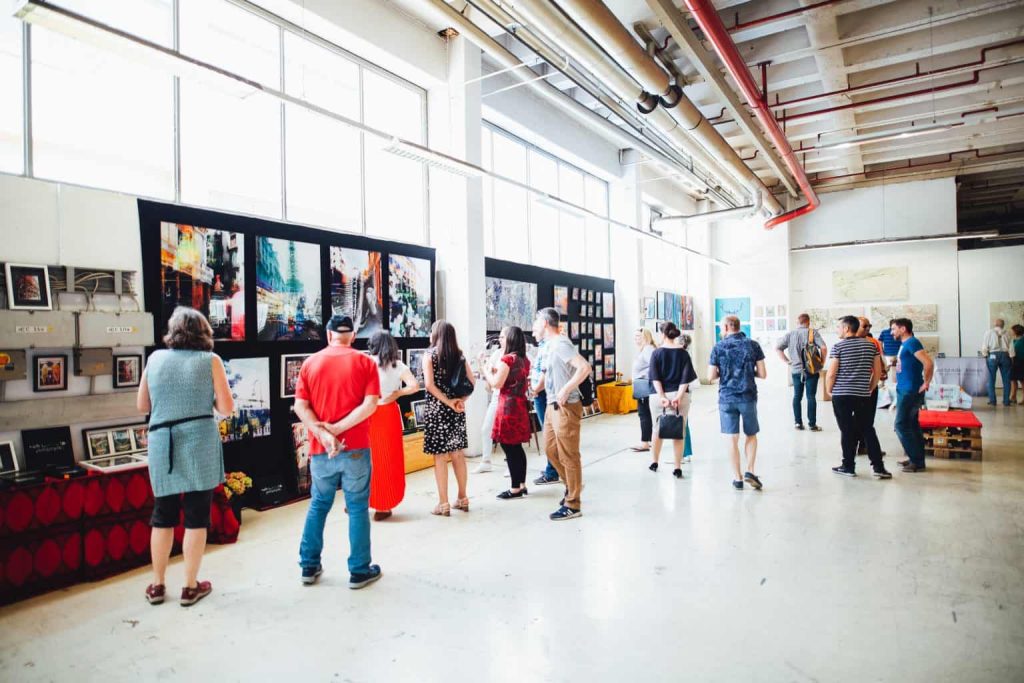
04 Feb Selecting the Perfect Venue for Art Exhibitions in 2024
Art exhibitions transcend the mere display of artwork, with the venue playing a pivotal role in shaping the overall experience for both visitors and artists. Selecting the right venue goes beyond logistics, as it involves curating an environment that fosters a profound connection between the observer and the artwork. This guide explores the intricate art of venue selection, providing insights on critical factors, tips, and lessons learned from successful art exhibitions. Whether you’re a seasoned curator, emerging artist, or event organizer, the aim is to empower you with the knowledge needed to navigate this complex decision-making process.
Key Factors to Consider for Art Exhibitions

Photo by PhotoMIX Company
Location
In choosing a venue for an exhibition, careful consideration of the location is paramount. Accessibility and the availability of public transportation options are critical to ensure that visitors can easily reach the venue. It’s equally important to assess the visibility and foot traffic in the surrounding area to maximize exposure and engagement. Additionally, aligning the venue with the target audience and the theme of the exhibition is crucial for creating a meaningful connection with attendees. Exploring unconventional spaces, such as historical buildings or industrial warehouses, can add a unique and memorable dimension to the overall experience.
Space and Layout
The space and layout of the venue are fundamental to the success of the exhibition. Evaluating wall space, floor space, and ceiling height is essential to ensure they can adequately accommodate the artwork and desired layout. Flexibility and adaptability are also key considerations, allowing for various exhibition configurations to suit different artistic presentations. Natural light and lighting capabilities should be carefully assessed to effectively showcase the artwork and create the desired atmosphere within the space.
Atmosphere and Ambiance
Considering the atmosphere and ambiance of the venue is crucial for enhancing the overall visitor experience. Evaluating existing architectural features and the venue’s aesthetic ensures they complement the artwork being displayed. Control over temperature, humidity, and noise levels is essential to maintain optimal conditions for the artwork and to create a pleasant environment for visitors. The goal is to craft a space that not only showcases the art but also immerses visitors in a memorable and meaningful experience.
Logistics and Amenities
The logistical aspects of a venue play a significant role in the smooth execution of an exhibition. Ensuring the availability of loading docks, necessary equipment, and sufficient storage for artwork handling is vital. Security measures and insurance options must be in place to safeguard valuable pieces. Essential amenities like restrooms, cloakrooms, and accessibility features contribute to visitor comfort. Additionally, assessing the availability of Wi-Fi, catering services, or audiovisual equipment is important based on the specific requirements of the exhibition.
Budget and Fees
Prudent financial planning is crucial when considering a venue for an exhibition. Evaluating rental costs, security deposits, and additional charges for services or equipment is necessary to determine the overall budget. Negotiating for competitive rates and understanding cancellation policies are vital aspects of effective budget management. Striking a balance between budget constraints and the value proposition offered by the venue ensures a financially sound decision aligned with the exhibition’s goals and objectives.
Key Takeaways
Considerations | Key Takeaway |
Location | Align venue location with the target audience and theme. |
Space and Layout | Prioritize flexibility and natural light for optimal display. |
Atmosphere and Ambiance | Leverage existing features for a unique and immersive feel. |
Logistics and Amenities | Ensure security, accessibility, and necessary amenities. |
Budget and Fees | Balance costs with the venue’s value proposition. |
Tips for Choosing the Right Venue

Photo by Ahsen
Define your exhibition's needs
Exhibitions of art are more than just a collection of pieces on show; the location is crucial in determining the entire experience of both artists and viewers. Finding the ideal location entails more than just practical considerations; it also entails creating an atmosphere that encourages a strong bond between the viewer and the artwork. This guide delves into the complex art of venue selection, offering advice, suggestions, and insights from three generations of successful art shows. Whether you are an experienced curator, a budding artist, or an event planner, our goal is to arm you with the information required to successfully negotiate this difficult decision-making process.
Research and compare options
Utilizing a variety of resources, including online directories, venue recommendations, and personal networks, is essential for identifying potential venues. Leverage these tools to compile a list of promising options. However, a virtual assessment is only the first step. To make an informed decision, visit the shortlisted venues in person to gain a firsthand understanding of the space and ambiance. During these visits, engage with venue representatives and ask detailed questions about logistics, such as load-in procedures and available storage space. Inquire about amenities, such as parking facilities and technical equipment. Additionally, thoroughly understand the venue’s policies regarding hours of operation, security measures, and any restrictions that may impact your exhibition. This detailed evaluation process ensures that the selected venue not only meets but exceeds your exhibition requirements.
Negotiate and secure the contract
Once you’ve identified the ideal venue, effective communication with the venue manager is crucial. Clearly articulate your needs and expectations, ensuring that both parties have a shared understanding of the event’s requirements. Engage in negotiations to establish rates and fees that align with your budget without compromising the quality of the venue or services provided. Prior to finalizing any agreements, carefully review a detailed contract that outlines all terms and conditions. This contract should cover aspects such as rental fees, payment schedules, cancellation policies, and any additional services provided by the venue. Clarity on these matters will help prevent misunderstandings and ensure a smooth collaboration between you and the venue.
Plan and collaborate with the venue
Throughout the planning process, maintaining open communication with the venue team is essential. Share your exhibition timeline, logistical details, and any specific setup requirements. Leverage the expertise of the venue team for recommendations on the optimal layout and design of your exhibition space. Collaborate closely to coordinate logistics, including load-in and load-out schedules, as well as any deliveries or installations. By fostering a collaborative relationship with the venue team, you can tap into their knowledge and experience, ensuring a seamless execution of your event. Regular communication ensures that any challenges are addressed promptly, contributing to the overall success of your exhibition.

Photo by Markus Spiske
Conclusion
Selecting the perfect venue for art exhibitions is an art in itself, requiring careful consideration of various factors to create an impactful and memorable experience. From the strategic choice of location to the intricacies of space and ambiance, every detail contributes to the overall success of the exhibition. This guide has provided a comprehensive overview of key factors to consider, practical tips for decision-making, insights from successful exhibitions across generations, and answers to common questions.
The location acts as the canvas on which the dynamic interaction between artists and spectators is portrayed in art exhibitions. Every aspect, be it the location’s ease of access, the room’s adaptability, or the atmosphere that accentuates the artwork, is crucial in determining how the audience interprets the piece. Exhibition organizers are empowered to make well-informed decisions that are consistent with their vision through a thorough examination of logistics, facilities, budgetary concerns, and negotiating methods.
FAQs
What role does the venue play in the success of an art exhibition?
The venue plays a pivotal role in shaping the audience’s experience and influencing how art is perceived. It contributes to the overall success of an exhibition by enhancing engagement, providing optimal conditions for artwork display, and creating a distinct atmosphere that complements the artwork.
How can I find a venue that aligns with my exhibition theme and target audience?
Consider factors such as location, visibility, and foot traffic in the surrounding area. Look for spaces that align with your exhibition theme and cater to your target audience. Unconventional venues like historical buildings or industrial warehouses can offer a unique experience. Research online directories, seek recommendations, and visit shortlisted venues in person to assess their suitability.
What are some essential logistics and amenities to consider when selecting a venue for art exhibitions?
Logistics and amenities are crucial for a smooth exhibition. Consider the availability of loading docks, storage, and security measures for artwork handling. Ensure the venue provides adequate facilities such as restrooms, cloakrooms, and accessibility features. Additional amenities like Wi-Fi, catering services, or audiovisual equipment may also be important, depending on your exhibition’s requirements. Be thorough in understanding rental costs, security deposits, and other fees while negotiating to stay within your budget.
Explore “Technologies Transforming Digital Art Exhibitions” that are changing and improving the viewing experience as you go on a tour through the cutting-edge world of digital art displays. From interactive installations to immersive virtual reality, these technologies are pushing the frontiers of artistic presentation in the digital age.

